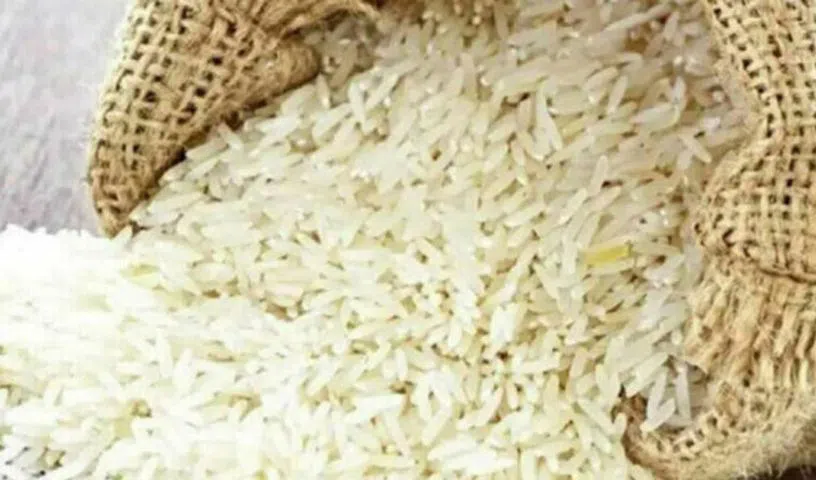Tags
Future of Rice Starch Market to be at $932 Million Opportunity, CAGR of 6% & Asia-Pacific to be Top Region.

PORTLAND, 5933 NE WIN SIVERS DRIVE, #205, OR 97220, UNITED STATES, October 23, 2023 /EINPresswire.com/ — In a recent report titled “Rice Starch Market” by Allied Market Research, the market for rice starch reached a value of $520.40 million in 2021. Projections indicate that it is poised to surge to $932 million by 2031, with a steady compound annual growth rate (CAGR) of 6% expected from 2022 to 2031
Rice starch is an insoluble white powder derived from rice. In addition, it contains Vitamin B, Vitamin C, and minerals which provide benefits to the human body. Moreover, it is widely used in the food & beverage industry, cosmetic & personal care industry, paper industry, pharmaceutical industry, textile industry, animal feed industry as well as laundry industry and is expected to increase in the rice starch market forecast period.
They key players included in the rice starch market analysis are A&B Ingredients, AGRANA Beteiligungs-AG, Anhui Shunxin Shenyuan Biological Food Co. Ltd., Aromantic Ltd., Bangkok Starch Industrial Co., Ltd., Beneo, Burapa Prosper, Ettlinger Corporation, Herba Ingredients, Ingredion, JiangXi Golden Agriculture Biotech Co., Ltd., and Pruthvi’s Foods Private Limited.
Key Findings
On the basis of type Regular rice starch segment dominated the global rice starch market in the year 2021, and is likely to remain dominant during the forecast period.
On the basis of form Native segment dominated the global rice starch market in the year 2021, and is likely to remain dominant during the forecast period.
On the basis of nature conventional segment dominated the global rice starch industry in the year 2021, and is likely to remain dominant during the forecast period.
On the basis of end use Food & Beverage Industry dominated the global rice starch market size in the year 2021, and is likely to remain dominant during the forecast period.
On the basis of region, Asia-Pacific region dominated the global rice starch market share in the year 2021, and is likely to remain dominant during the forecast period.
In dairy products, rice starch frequently takes the place of gelatin due to its superior pasting properties. A firm, elastic, and delicious gel can form when certain rice varieties are combined with specific starches. Additionally, the native normal and waxy rice starches can give low-fat yoghurts manufactured in the set and stir methods as well as non-fermented dairy desserts such as pudding their own distinct, clean label sensations.
Additional benefits of rice starch, which is frequently utilized in dairy products, include product stability, improved glossiness, and a clean flavor. Additionally, rice starches help low-fat dairy drinks have a creamy mouthfeel and a smooth texture. Clean-label and modified rice starches provide dairy fruit dishes with solidity and a particular smoothness while preserving a rich fruit flavor. By itself or in conjunction with waxy rice starch, it makes it possible to replace casein in dairy-free cheese while keeping its hardness, shredding, and melting properties. As a result, the market for rice starch is more in demand due to the capacity to substitute gelatin and other additives in dairy products.
The food business can benefit from the functional properties of rice starch. The starch found in rice is hypoallergenic, tastes bland, is white in color, and has a gel-like consistency. For instance, maize starch differs from other types of starch in that it is yellowish white, tastes like “cereal,” and solidifies into a gel. Therefore, compared to alternative sources of starch, rice offers the food processing sector considerable advantages in terms of end-use quality features. However, utilizing rice starch in food to accomplish a certain task is more expensive than using another starch source. In comparison to other types of starch, rice is more expensive to produce. Few well-established markets exist for its coproducts as well.
According to its hypoallergenic properties, rice starch has been used in many agri-food products. However, rice starch has limited commercial applicability due to its poor solubility, resistant starch concentration, retrogradation, and functional properties. It takes in-depth knowledge and a holistic understanding of the interactions between rice starch and endogenous and exogenous factors to improve physico-chemical properties to design industrial items with improved functional attributes.
The market for rice starch will therefore see increased demand as a result of the incorporation of new processing technologies in the manufacture to improve solubility that one of the rice starch market trends across the globe. Physically integrating biopolymers has the potential to enhance the functional qualities of rice starch as a raw resource for industrial applications.
In particular, the addition of natural/synthetic polymers and plasticizers to rice starch creates functional blends or composites that can be applied to the production of sustainable packaging materials, pharmaceutical, and nutraceutical products and other industrial uses. The quality of rice starch can also be altered chemically and genetically to be used in industrial applications is likely to contribute to the rice starch market growth.
The rice starch market is segmented on the basis of type, form, nature, end use, and region. On the basis of type, the market is bifurcated into waxy rice starch and regular rice starch. According to form, it is classified into native and modified. As per nature, the market is segregated into organic and conventional. Depending on end use, it is divided into food & beverage industry, cosmetic & personal care industry, paper industry, laundry industry, pharmaceutical industry, and others. Region-wise, it is analyzed across North America, Europe, Asia-Pacific, and LAMEA.
According to the market players, the major obstacle attributed to the pandemic was the disruption of the supply chain. Furthermore, all the distribution channel were nearly shut down in the first quarter of the pandemic. However, online channels such as Amazon and Flipkart were delivering the products.
https://www.abnnewswire.net/press/en/121283/Future-of-Rice-Starch-Market-to-be-at-$932-Million-Opportunity-CAGR-of-6-Asia-Pacific-to-be-Top-Region.htmlPublished Date: October 23, 2023







